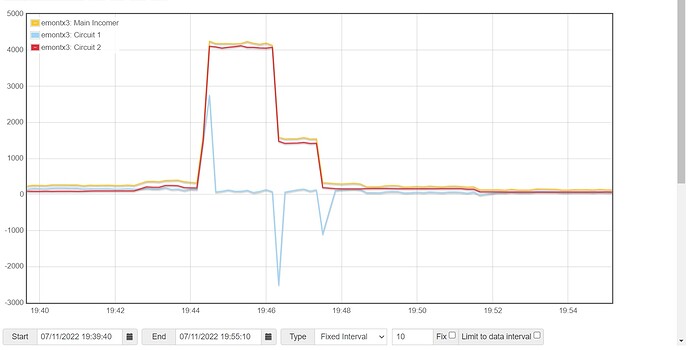Hi,
I’ve just recently installed a EmonBase and Tx in my house, the TX is currently power off battries so using the powersave firmware. I have a consumer unit which is split between two RCDs with various circuits in both. I currently have two CT sensors connected, one on the main incomer live tail and one on the second RCD live feed. I basically want to monitor each RCD separately. I’ve setup the following configuration on the main incomer CT to give me the first RCD readings.
The second circuit setup below
Below is the problem I’m having with this solution
Every time that there is a load on the second circuit, it is causing the first circuit to spike either positively or negatively, I’m presuming this is because the feed is setup in the main incomer input, the spike lasts about 30 seconds, I know its not a huge issue over all but would be nice to know if someone has a solution to this. All feeds are setup to 10 second updates.
Thanks,
Phil


